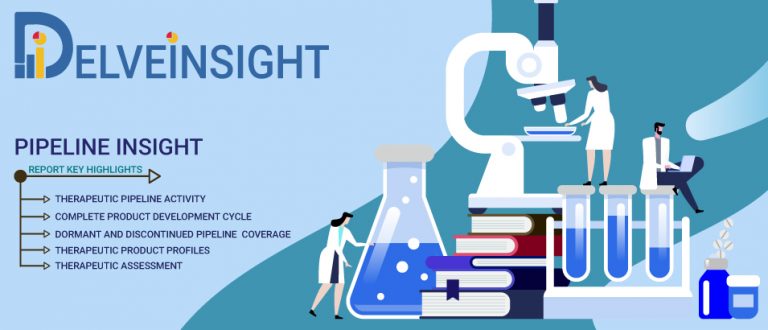Dry AMD Pipeline Insights, 2022 report by DelveInsight outlays comprehensive insights of present clinical development scenario and growth prospects across the Dry AMD market. A detailed picture of the Dry AMD pipeline landscape is provided, which includes the disease overview and Dry AMD treatment guidelines.
Dry AMD Overview
Age-related macular degeneration (AMD) is a degenerative disease of the center area of the ocular-posterior segment (the macula lutea) that causes slow degeneration in central vision and severe disability in affected persons. Clinically, AMD is classified according to different approaches. One such approach is that the disease is classified as an early-stage to late-stage (advanced AMD). The advanced AMD is classified into the nonexudative or atrophic form (dry AMD) and the exudative or neovascular form (wet AMD).
Request Sample Report @ Dry AMD Pipeline Report
Usually, dry AMD progresses very slowly whereas, some people experience severe visual impairment within days or weeks of the onset of wet AMD. No symptoms appear during the early stage of the disease. During this initial stage, an ophthalmologist can detect drusen long before symptoms occur. Symptoms that typically occur during the intermediate stage include minor alterations in eyesight; however, many people do not have any symptoms at this time.
Dry AMD Pathophysiology
Over time, the central field of vision may become obscured, and central vision loss (scotoma) is experienced as the disease progresses. The thickening of the Bruch membrane characterizes the pathogenesis of early AMD due to lipid and protein accumulation that leads to the formation of sub-RPE deposits that occur as discrete accumulations, called drusen, which can be hard or soft, or as continuous accumulations. Drusen contain a wide variety of components, including proteins, lipids, cholesterol, and cellular fragments of the RPE. In the early stages of the disease, drusen number is limited and does not affect visual function. The lipid build-up primarily interferes with the fluid efflux from the RPE across BM, thereby inflicting stress on the RPE.
These and other stressors (e.g., oxidative stress from smoking and aging) result in an increased accumulation of lipofuscin in RPE cells, affecting lysosome function and cholesterol metabolism. Cells under stress are known to increase the release of membranous vesicles such as exosomes, and this process may be in part responsible for the deposits in the sub-RPE region. As a result of the decreased flow of nutrients across BM and the physical displacement caused by drusen, areas of hypopigmentation of the RPE monolayer on histologic tissue sections can be observed in the macula. As the number of drusen increases or pigmentary changes is apparent in the retina due to the degeneration of RPE cells, the disease progresses from early to intermediate AMD. Eventually, the disease can progress to late AMD.
Dry AMD Diagnosis
The diagnostic methods of AMD include fundus imaging, fluorescein angiogenesis (FA), indocyanine green angiography (ICGA), optical coherence tomography (OCT), Optical coherence tomography angiography (OCTA), and artificial intelligence (AI). These techniques play an important role in the diagnosis of AMD and have their unique advantages.
A detailed understanding of the molecular mechanisms underlying wet AMD has led to several robust FDA-approved therapies. In contrast, there are not any approved treatments for dry AMD. The management of dry AMD consists of observation, regular follow-up evaluations, and documentation for timely recognition of visual function deterioration with appropriate rehabilitation and early CNV detection.
Dry AMD Therapeutic Assessment
- Product Type
- Stage and Product Type
- Route of Administration
- Molecule Type
- Mechanism of Action
- Targets
Get in-depth information on Dry AMD Therapies
Table of content
1. Report Introduction
2. Dry AMD
3. Dry AMD Current Treatment Patterns
4. DelveInsight’s Analytical Perspective
5. Therapeutic Assessment
6. Late Stage Products (Phase-III)
7. Mid Stage Products (Phase-II)
8. Early Stage Products (Phase-I)
9. Pre-clinical Products and Discovery Stage Products
10. Inactive Products
11. Dormant Products
12. Discontinued Products
13. Product Profiles
14. Key Companies
15. Key Products
16. Dormant and Discontinued Products
17. Unmet Needs
18. Future Perspectives
19. Analyst Review
20. Appendix
21. Report Methodology
About Us
DelveInsight is a Business Consulting Services and Market research company, providing expert business solutions for the life science vertical and offering quintessential advisory services in the areas of R&D, Strategy Formulation, Operations, Competitive Intelligence, Competitive Landscaping, and Mergers & Acquisitions.
Contact Us
Yash
info@delveinsight.com
Media Contact
Company Name: DelveInsight Business Research LLP
Contact Person: Yash Bhardwaj
Email: Send Email
Phone: 9193216187
Address:304 S. Jones Blvd #2432
City: Las Vegas
State: NV
Country: United States
Website: https://www.delveinsight.com/

